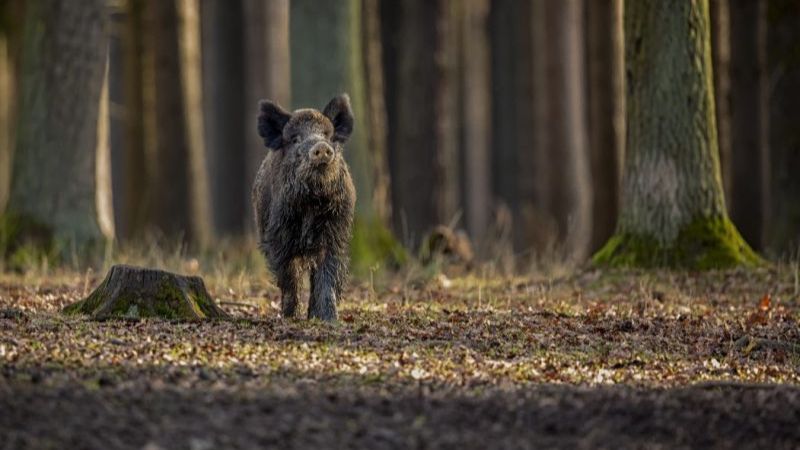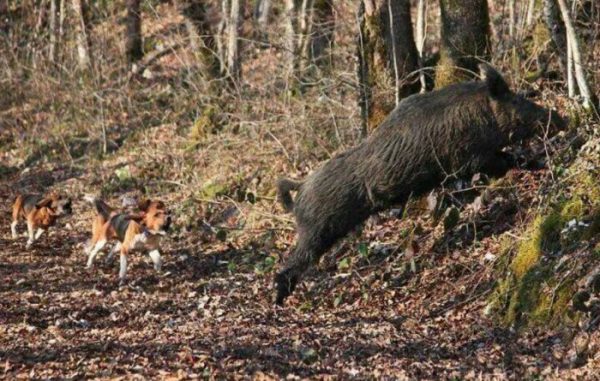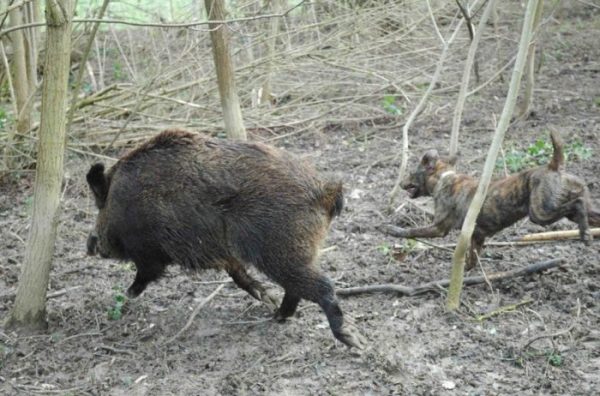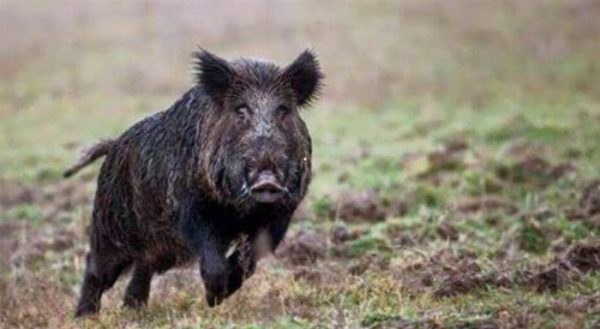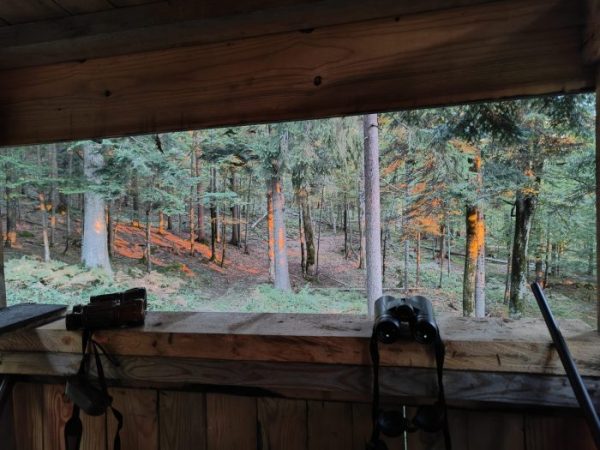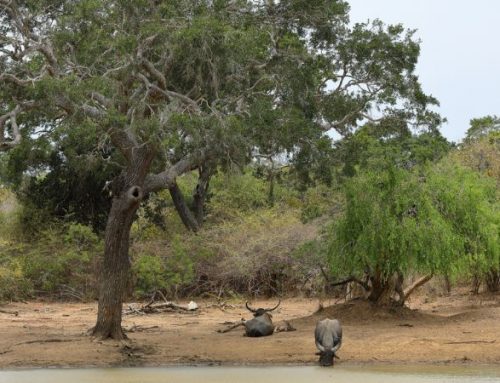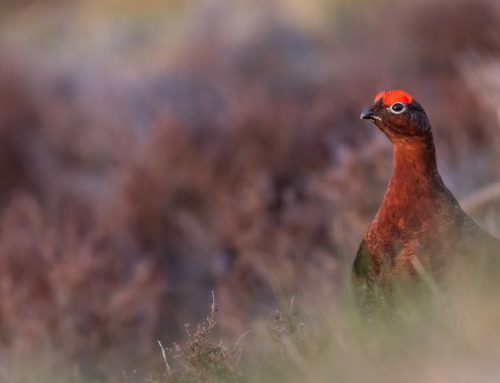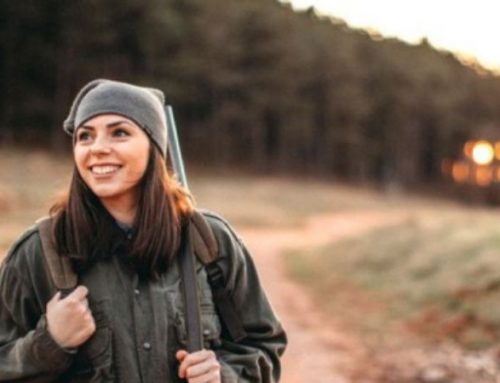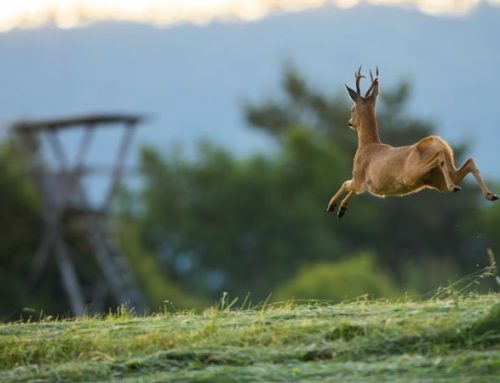Which are the types of wild boar hunting?
There are essentially three types of wild boar hunting: driven hunts, searches, and selective stand hunting.
Collective driven hunts (known as battuta, girata, or cacciarella).
The primary characteristic of this type of wild boar hunting is adrenaline. The baying of hounds, the hunters’ shouts, and the stampede of the fleeing boars create an exhilarating hunting experience. Those passionate about wild boar hunting should have participated in a collective hunt in Sardinia or Tuscany, where these hunts take on the qualities of sacred rituals.
The anecdotes, laughter, before and after the hunt, make these hunting moments a celebration of friendship and camaraderie among hunters sharing a passion and lifestyle that many will never understand or know. From the start, when the head hunter reminds all participants of safety rules and gives directives to the team, to the end of the hunt, the atmosphere becomes very serious. Concentration and adrenaline reach their peak levels.
Here, you can feel:
- The competence of all participants
- Their responsibility and hunting ethics
- The passion for hunting and wildlife
- The respect for the animal
In Italy, despite being loved, the wild boar is still considered a “nuisance,” so besides the enjoyment, considering the utility of the event for species control is fundamental. The wild boar’s reproductive rates, averaging around 120-150% annually and reaching peaks of 200%, cause immense damage to crops.
In Italy, there’s often confusion between driven hunts and search hunts.
Driven wild boar hunting
It’s crucial to specify that driven hunts are recognized by the following characteristics:
- A vast territory
- Presence of “beaters” who form a proper “human cord”
- A high number of participants
- Use of packs of specialized dogs
- Usually elevated positions with a frontal shooting range
- Long shots
This is the most spectacular and mainly practiced in Eastern European countries, boasting a centuries-old tradition. Often, local youths, women, and children from neighboring villages join the beaters. The success of this hunt relies mainly on the beaters’ ability to create a thick human line, progressively advancing through the woods, driving the animals towards the positions where hunters await.
The vast plains of Romania and Hungary are prime locations for this type of hunting. The number of positions is always high, and compared to other collective wild boar hunts, this has the highest number of participants. Therefore, it eventually becomes a genuine event.
The execution technique is very similar to the driven hunt, more widespread in Italy, but involves a much higher number of beaters advancing and urging the wild boars.
As mentioned earlier, this form of hunting in Eastern European countries often becomes a folklore and celebratory tradition during patron festivals, involving entire communities. Hungarian, French, German, and generally Central and Eastern European wild boar hunts often involve up to 100 participants.
Wild boar hunting through “braccata”
This is the most practiced form of wild boar hunting in Italy. It takes place in forested areas, perfect habitats for boar reproduction. In Tuscany and Sardinia, it’s almost a cult-like experience. “Braccata” or “Cacciarella” mainly differs from “Girata” due to a higher number of participants, including beaters and shooters at positions.
The hunt begins at dawn with the search for nocturnal tracks and the boars’ resting areas in the area of interest. Once the herds and their respective hiding places are identified, positions are organized to encircle the animals, and hunters are placed on the trails usually frequented by prey.
The “lestra,” known in Maremma or more commonly as “il covo,” is the boar’s hideout during the hunt, which might also be the same place where they rest at night. “Tirare a la lestra” means shooting the boar in its hideout. The name probably originates from the Latin “lustra‑orum,” meaning hiding place of wild animals.
After this initial phase, having arranged all the hunters at their positions, the beaters reach the heart of the area and incite their helpers to stir the boars from their overnight hiding spots. The maximum adrenaline of this hunt and its beauty culminate when the dogs, having identified the boars, start pushing them toward the positions with barks and howls.
The excitement builds up progressively as the voices of dogs and beaters approach, from the commands and encouragements shouted by the beaters to the dogs’ barking. Senses expand, and nerves tense up to seize the moment when the sought-after black beast suddenly dashes out of the thicket like lightning.
Apart from directing their helpers, the beaters play a central role in the success of this hunt. Their encouragement of the dogs and individual individuals with shouts and colorful curses, encouragement, and shots, their protection of the numerous dogs engaged in action from possible attacks, prepares the positions for the climax that ends with the inevitable shots.
The shot itself is only the completion of an action that has been ongoing since the night before and is usually sleepless for the true hunter.
Wild boar hunting through “girata”
The “limier” is the only dog used in this form of hunting, differentiating it from other collective wild boar hunting methods. It is a type of hunt useful for containment purposes in populated areas where environmental peace needs to be respected for both residents and other wildlife species.
Usually, a maximum of 9 or 10 hunters participate in relatively small areas, often located on the fringes of protected areas such as oases, nature reserves, or parks with high boar density. The Basset Hound is considered one of the most suitable breeds for this type of wild boar hunting.
The technique is similar to that of “braccata,” while the “girata” wild boar hunting is more selective and targeted – essentially a mini “braccata.” After identifying the animals’ hiding spots with the essential morning tracking, the area is surrounded by about ten positions. Then, the limier handler drives the boars toward the positions where the hunters await with their semi-automatics shotguns, semiauto rifles or bolt action rifles.
This hunt is quicker, lasting only a few hours, allowing teams to move between different zones on the same day.
Search hunting (stalking)
Search hunting for wild boars is rarely practiced in Italy, although equally fascinating. The animals must be approached progressively in grazing areas, silently and with the wind in favor.
Contrary to common belief, the wild boar is still by far the most intelligent animal in the woods. This hunt requires experience, skill, and teamwork, especially if practiced with a guide. The shooter must be skilled, aiming for precise shots, preferably behind the ear, to stop the prey on the spot, avoiding long retrieval times and sometimes the frustrating loss of the animal.
For effective approaches, it’s better to move when the animals have been calm in the pasture for some time.
Selective stand hunting (from the hide)
The selective hunting technique, known as “caccia all’aspetto dall’altana,” is practiced in Italy by authorized “selecontrollori” appointed by the province after passing a specific exam.
The “altana” is generally placed near feeding places or entry/exit points from the forest, at dawn or dusk. This type of hunting requires suitable equipment, including a rangefinder, precision optics with good light-capturing abilities and a wide lens, a bolt-action rifle with very accurate calibration, and a light source useful for retrieval in case of injury.
Once you reach the position, it’s crucial to find support from all the levers to ensure perfect stability during the aiming moments preceding the shot. At this point, you will be ready to skillfully and perhaps a bit luckily take your wild boar.
Things to remember while hunting wild boar:
Footprints: Recognizing footprints is crucial: the male boar’s hoof is different from the sow’s. The male has a rounder, pointed imprint, while the sow’s is longer and more open. In pregnant females, the claws are notably more spread due to the weight of the fetuses, resulting in more pronounced claw imprints.
When you find a cluster of footprints, pay close attention to them. Typically, clusters are made by pregnant females at the edge of the herd, attempting to isolate themselves for birthing. The type of footprint and the nature of the cluster indicate to whom the trace belongs.
The solitary male, hence called Solengo, usually moves in a linear manner, and if it does create “clusters,” they are very confined. Even its ground excavations are different from females. The male boar generally eats while moving and stops only when encountering specific foods.
The Solengo: The Solengo primarily spends its days seeking females in heat to mate. Its feeding isn’t a long, rare pause but a continuous succession of snacking moments.
The older boars often have one or two “squires,” rarely three. They are easily recognizable in groups led by females because they lack the imprints of the small striped or red beasts.
Young males leave the herd around one year of age and seek an older male to join as squires. During this period, they are fearful and clumsy and, if attacked by a dog, defend themselves hesitantly and full of fear. In contrast, the adult boar is aware of its strength and moves decisively and resolutely.
Often, the young, after an initial rapid and solitary flight, stop again in the first refuge they feel is safe, even if it’s nearby. The old boar, once finding an escape route, never stops nearby.
Sometimes, only one animal flees from the herd in the shelter. Almost certainly, it’s a red beast.
If facing a male boar with its squire, usually, the squire flees first, while the old boar remains. Occasionally, it’s the old male who tries to escape first, leaving the squire to its fate.
When the tracks of two Solenghi point to the same herd, and one separates while the other gets confused with those of other sows, it means the two males clashed, and one fled as the loser.
There are a couple of techniques to know if you want to momentarily take down the male that has temporarily joined the female herd: Generally, the male boar in the shelter doesn’t mix with the herd but remains somewhat distant. The dog then has two options: either to head directly to the male or to the herd. In the first, the dog isolates the male, making it available for capture. Generally, males tend to stay somewhat isolated, but if they are amidst the herd, the dog should try to make the females pass, as they usually move first, offering the hunter a safe target.
Females: Females, as always in nature, take care of procreation and defending their young. Reproduction and feeding are their daily activities. One or two older sows lead the herd, deciding on movement trajectories and defense strategies. If, for some reason, the herd has lost the older sows, it falls into disarray. This is evident from the clusters and the escape paths in front of the dogs. An ethical boar hunter will always avoid taking the lead sows.
Older sows that isolate themselves to give birth or have recently done so fiercely defend themselves. If they have young ones not yet able to walk, they silently and suddenly attack the dog or human with vigor to definitively disable them. If they have suckling piglets with them, they initially prefer to threaten with their characteristic sound. Younger sows flee in fear, abandoning their offspring, which the older ones also do if they realize they have no defense against the dogs. However, their strategy, in this case, is to try to distract the dogs to keep them away from the cubs. Nature is cruel but perfect, and its species conservation logic dictates that the survival of a reproducer, especially if young and healthy, is more important than the survival of a single litter.
Meanwhile, the lone cubs, now alone and unable to follow their mother, instinctively try to blend in and hide thanks to their striped coat.
Recommended wild boar hunting optics
Driven hunts and searches: If you’re looking for an optic for driven hunting with long shots and open spaces and using an express, bolt-action rifle, or semi-automatic rifle, a 1-6×24 optic is your choice. It’s perfect for quick shooting in wild boar hunting at medium distances, especially with moving animals.
Hunting through forest and selective hunting: if you’re operating in dense forest and your shots need to be lightning-fast and instinctive, you can opt for a parallax-free sight. These laser pointers for rapid shooting ensure excellent visibility. Usually robust yet lightweight, they are designed to be used even with the most powerful calibers.
Selective hunting: if you’re a selective hunter and practice selective stand hunting, you need optics with good brightness and reliable precision over long distances.
Safety first: remember, you are hunting, and when hunting, you go armed. Ensuring your safety is the top priority, so a moment of joy doesn’t turn into a tragedy.

